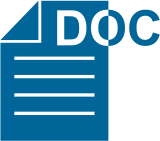KARAKTERISTIK ALTERASI DAN MINERALISASI BERDASARKAN PENGAMATAN INTI BOR DENGAN METODE ANALYTICAL SPECTRAL DEVICES (ASD) DAN CORESCAN DI AREA PIT A DAN PIT C DAERAH TUMPANGPITU, KABUPATEN BANYUWANGI, JAWA TIMUR
ALTERATION AND MINERALIZATION CHARACTERISTICS BASED ON CORE LOGGING OBSERVATION WITH ANALYTICAL SPECTRAL DEVICES (ASD) AND CORESCAN METHODS AT PIT A AND PIT C AREA OF TUMPANGPITU, BANYUWANGI DISTRICT, EAST JAVA
Abstract
The research area is located within the Mining Bussines Licence-Operation Production (IUP-OP) of PT Bumi Suksesindo in the Tumpangpitu area, Pesanggaran District, Banyuwangi Regency, East Java. The research area covers two areas, namely Pit A and Pit C. In Tumpangpitu, there are two types of ore deposits: porphyry copper and high-sulfidation epithermal gold. The aim of this research is to determine the types of lithology, alteration, mineralization, and ore deposit types in the research area. The research methods used include detailed core logging, analytical spectral devices (ASD) measurement, corescan, and mineragraphy analysis. The research was conducted using data from 10 drill holes: GTD-719, GTD-727, GTD-728, GTD-735, GTD-778, GTD-781, GTD-782, GTD-785, GTD-786, and GTD-792. The correlation results of the drill holes in the research area indicate that the lithology consists of andesite volcanic, preatomagmatic phase 1 breccia, dacite volcanic, diorite, preatomagmatic phase 2 breccia, and dacite intrusion dome. Based on the set of alteration minerals, pH, and temperature, there are 7 alteration zones: silica, silica ± alunite, pyrophyllite ± diaspore ± alunite, alunite ± pyrophyllite ± dickite ± kaolinite, alunite ± kaolin, kaolinite ± dickite ± montmorillonite-illite, chlorite ± montmorillonite-illite. The mineralization found includes pyrite (FeS₂), enargite (Cu₃AsS₄), and sphalerite ((ZnFe)S). The type of deposit in the research area is high-sulfidation epithermal deposit with a depth of 500-1,000 meters (intermediate).
Downloads
References
Achdan, & Bachri. (1993). Peta Gelogi Lembar Blambangan, Jawa Timur. Bandung.
Bemmelen, V. (1948). The Geology Of Indonesia. Goverment Printing, The Hague 1949.
Corbett, G., & Leach, T. (1997). Southwest Pacific Rim Gold-Copper Systems: Structure, Alteration, and Mineralization.
Dermawan, I. A., Subandrio, A. S., Rudyawan, A., Sanjaya, A. D., Maharief, R., Anditya, K., . . . Muttaqien, M. S. (2020). Structural Control Related With Medium-To-Very High Au Grade At Pit B East And B West, Tujuh Bukit Mine, East Java. Bulletin GEOLOGY Fakultas Ilmu dan Teknologi Kebumian (FITB), 4, 456-473. doi:10.5614/bull.geol.2020.4.1.2.
Dept. Geoscience, PT Bumi Suksesindo. TB Geological Posters and Logging Atlas. Unpublished.
Hammilton, W. (1979). Tectonics of the Indonesian Region.
Harrison, R. L. (2018). The Tumpangpitu porphyry gold-copper-modlybdenum and high-sulfidation epithermal gold-silver deposit, Tujuh Bukit, Southeast Java, Indonesia. University of Tasmania Open Access Repository.
Harrison, R. L., Maryono, A., Norris, M. S., Rohrlach, B. D., Cooke, D. R., Thompson, J. M., . . . Thiede, D. S. (2017).
Geochronology of the Tumpangpitu porphyry gold-copper-molybdenum and high-sulfidation epithermal gold-silver-copper deposit - Evidence for pre- and post-mineralization diatremes in the Tujuh Bukit district, Southeast Java, Indonesia. Economic Geology.
Hauff, P. (2008). An Overview Of Vis-Nir-Swir Field Spectroscopy As Applied To Precious Metals Exploration. Arvada: Spectral International Inc.
Husein, S. (2016). Fieldtrip Geologi Cekungan Jawa Timur Utara. Yogyakarta: Dept. of Geological Engineering UGM.
Lawrence, L. (1981). Ore Microscopy (Mineragraphy). In: Mineralogy. Encyclopedia of Earth Science. Springer, Boston, MA. doi:https://doi.org/10.1007/0-387-30720-6_95.
Lindgren, W. (1933). Mineral Deposits. New York and London: McGRAW-HILL BOOK COMPANY, Inc .
Myaing, Y. Y., Idrus, A., & Titisari, A. (2018, Februari). Fluid Inclusion Study of The Tumpangpitu High Sulfidation Epithermal Gold Deposit in Banyuwangi District, East Java, Indonesia. Journal of Geoscience Engineering Environment and Technology, 03, 8-14. doi:10.24273/jgeet.2018.3.01.1039.
Noor, D., & Widodo, B. (2016). Alterasi Hidrotermal Daerah Wonotirto Dan Sekitarnya Kecamatan Wonotirto, Kabupaten Blitar, Jawa Timur. 1-12.
Pannekoek, A.J. (1949) Outline of the Geomorphology of Java. Reprint from Tijdschriftvan Het Koninklijk Nederlandsch Aardrijkskundig Genootschap, vol. LXVI part 3, E.J. Brill, Leiden, pp. 270-325.
Thompson, A.J.B., and Thompson, J.F.H., 1996, Atlas of alteration: A field and petrographic guide to hydrothermal alteration minerals: Geological Association of Canada, Mineral Deposits Division, 119 p.
White, N. C., & Hedenquist, J. W. (1995). Epithermal Gold Deposits: Styles, Characteristics And Exploration. SEG Newsletter, 23, 9-1
Copyright (c) 2025 Buletin Sumber Daya Geologi

This work is licensed under a Creative Commons Attribution-NonCommercial-ShareAlike 4.0 International License.
Authors whose manuscripts are published agree to the following terms:
The publication rights of all journal manuscript materials published on the Buletin Sumber Daya Geologi website are held by the editorial board with the knowledge of the author (moral rights remain with the manuscript’s author).
The formal legal provisions for access to digital articles in this electronic journal are subject to the terms of the Creative Commons Attribution-ShareAlike (CC BY-SA) license. This means that Buletin Sumber Daya Geologi has the right to store, convert media/formats, manage in the form of a database, maintain, and publish the article without requesting permission from the author, as long as the author’s name is cited as the copyright holder.
Manuscripts published in both print and electronic formats are open access for educational, research, investigative, and library purposes. Beyond these purposes, the editorial board is not responsible for any violations of copyright law.















